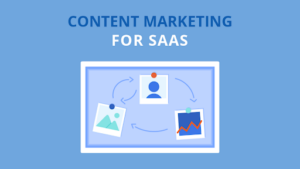The Role of Content Marketing in SaaS User Acquisition

In the competitive world of Software as a Service (SaaS), acquiring new users is a constant challenge. With countless options available, potential customers need strong reasons to choose one platform over another. Content marketing becomes essential in driving engagement and conversions. Instead of relying solely on paid ads or cold outreach, SaaS businesses can use high-quality content to attract, educate, and convert users organically.
Why Content Marketing is Essential for SaaS Growth
Unlike traditional businesses, SaaS companies often have longer sales cycles, subscription-based pricing models, and a need for continuous engagement. Content marketing addresses these challenges by:
Building Awareness – Potential customers may not even realize they need a SaaS solution. Blog posts, videos, and infographics can introduce them to the problem your product solves.
Helping Users Learn – SaaS platforms can be complex and may require guidance for effective use. Content like guides, case studies, and webinars helps users understand the benefits and features of your software.
Establishing Authority – High-quality, well-researched content positions your company as a leader in the industry, earning trust from potential customers.
Boosting Organic Traffic – SEO-driven content helps your website rank higher on search engines, leading to a steady flow of inbound leads.
Improving Conversions – Well-structured content nurtures leads through different stages of the funnel, eventually turning them into paying customers.
Key Content Marketing Strategies for SaaS User Acquisition
To maximize user acquisition, SaaS companies should focus on specific content strategies tailored to their target audience. Below are some highly effective strategies:
A well-maintained blog can be one of the most powerful tools for driving organic traffic and acquiring new users. By targeting high-intent keywords, SaaS businesses can attract potential customers searching for solutions.
Examples of Effective Blog Topics:
“Best Project Management Tools for Remote Teams”
“How to Automate Customer Support with AI Chatbots”
“CRM vs. ERP: Which One Does Your Business Need?”
Pro Tip: Use long-tail keywords and focus on bottom-of-the-funnel search queries to attract users who are ready to make a purchase.
Case studies provide real-world proof of how your SaaS product solves problems for businesses. These stories serve as social proof, making it easier to convince potential customers to try your software.
How to Create a Strong Case Study:
Highlight the customer’s challenge
Show how your SaaS solution helped solve the problem
Include quantifiable results (e.g., “Increased conversions by 45%”)
Add testimonials or quotes from satisfied clients
Not all users prefer reading blog posts. Videos can simplify complex SaaS solutions, making it easier for potential users to understand how your software works.
Best Types of SaaS Video Content:
Explainer Videos – Showcase your product’s core benefits in under 2 minutes.
Product Demos – Walk users through specific features and use cases.
Customer Testimonials – Show real users discussing their success with your platform.
Offering high-value resources in exchange for an email address is an effective way to capture leads. Once users enter your funnel, they can be nurtured through email marketing and retargeting campaigns.
Examples of Lead Magnets:
Free eBooks & Whitepapers
Industry Reports
Webinars & Live Q&A Sessions
Free Templates & Checklists
Once users sign up for a free trial or download a lead magnet, they should be guided through an automated email sequence that provides additional value and encourages them to upgrade to a paid plan.
Key Email Sequence Ideas:
Welcome Email – Introduce your SaaS platform and key features.
Educational Email – Share blog posts or case studies relevant to their needs.
Product Tutorial Email – Offer a step-by-step guide on using the platform.
Testimonial Email – Showcase success stories from other customers.
Final Reminder Email – Create urgency by reminding users about their trial expiration.
Many SaaS businesses build online communities (e.g., LinkedIn groups, Slack channels, Facebook groups) where users can discuss the software, share feedback, and get support.
Encouraging User-Generated Content (UGC):
Ask customers to leave reviews on G2, Capterra, or Trustpilot.
Feature user success stories on your blog or social media.
Encourage customers to create tutorials or share their experiences.
Measuring the Success of Your Content Marketing Efforts
To ensure your content marketing efforts are driving user acquisition, track key performance indicators (KPIs):
Essential Content Marketing Metrics:
Website Traffic: How many visitors land on your blog or landing pages?
Conversion Rates: How many visitors sign up for a free trial or demo?
Bounce Rate: Are users staying on your site or leaving immediately?
Engagement Metrics: Shares, comments, and time spent on content.
Customer Acquisition Cost (CAC): Are you acquiring users cost-effectively?
Final Thoughts
Content marketing is a long-term strategy, but when executed correctly, it can become a sustainable source of user acquisition for SaaS businesses. By consistently creating valuable content, optimizing for SEO, and nurturing leads with email marketing, SaaS companies can attract the right audience and convert them into loyal customers.
If your SaaS business isn’t leveraging content marketing yet, now is the time to start. With the right strategy, you’ll reduce reliance on paid ads, increase brand authority, and drive consistent growth over time.
© THONUOC| ALL RIGHTS RESERVED